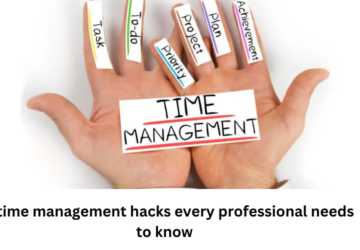Increased business closings have convinced you to implement COVID-19 health safety measures. By minimizing public health risks, you reduce the threat of a shutdown. If you want to introduce COVID-19 safety measures but don’t know how, here are four frequently asked questions to get you on track.
1. What Is The Best Way To Systemize Screening?
Gathering information successfully requires the use of a systematic approach. In terms of collecting screening information on employees, the system you use should be sufficient enough to indicate the presence of COVID-19 at work.
One systematic approach is to use an official screening form that outlines the necessary questions that must be answered to rule out the presence of COVID-19. See more how using a form template will allow your business to collect data on a COVID-19 screening form. Your form should be part of a larger plan.
2. What Safety Precautions Correlate With COVID-19 Screening Forms?
As previously stated, the COVID-19 screening form that employees and customers complete for health evaluation purposes is just one component of a more extensive safety policy. In addition to the COVID-19 screening form, businesses should have other official requirements, including:
- wearing facemasks at work
- complying with temperature checks
- maintaining social distancing of six feet
- washing hands before work begins
3. What Screening Questions Should Be Included?
While you can rely on form templates to dictate most of your screening questions, it is good to have a general idea of what to ask should you need to perform screenings on the spot. There may be moments where forms are inaccessible, and asking one-on-one questions is your only option.
To prepare yourself for these moments, the main screening questions to ask are:
- Are there any COVID-19 symptoms present (fever, muscle pain, nausea, headache, loss of smell/taste, etc.)?
- Have they been near family members with similar or different COVID-19 symptoms?
- Have they recently traveled or been near others who have traveled?
- In the last two weeks, have they knowingly been around persons with COVID-19?
- Is anyone in their family waiting on COVID-19 testing results?
- Are they wearing facemasks, using hand sanitizer, and staying six feet apart from others while in public settings?
Remember that the purpose of these COVID-19 health screenings is to rule out the likelihood of the virus. As long as your questions collectively accomplish this objective, they are getting all of the information you need.
4. How Can I Make A Checkpoint System?
In addition to the COVID-19 screening form, including multiple checkpoints throughout the workday to monitor health symptoms is necessary to prevent business closings as well as to reduce the spread of the virus.
The best time to conduct your checkpoints is specific to the time slots you have available to complete these checks. Everyone is on a different schedule, and you’ll need to consider your own before deciding when the most appropriate time is to execute checks at work.
You might also consider having a staff member complete health checks for you if you have no free time. Consider the most appropriate time for checks based on your typical workday and those of your employees.
Determine when customers are in close corners with employees (if applicable to your business) and how soon thereafter a COVID-19 screening form can be carried out without interfering with customer satisfaction.
You might decide that:
- screening customers is necessary before the start of appointments
- screening employees should take place before the start of their shift and again after lunch if they leave the workplace.
Your checkpoint times are relative to your business schedule and operations.
Managing Screening Results
- Getting an idea of a person’s health profile will help you decide whether they should leave or stay at work.
- If an employee is too sick to work, encourage them to stay home until their COVID-19 results are negative again.
- To accommodate customers, creating a policy that allows for appointment flexibility should provide accommodation if they experience symptoms during their appointments.
The Big Picture
Safety policies support public health and stabilize businesses. Business owners are responsible for protecting their staff and customers so they can maintain a healthy business environment. Implement COVID-19 screenings at work and know you’re doing your part to take care of your team!








